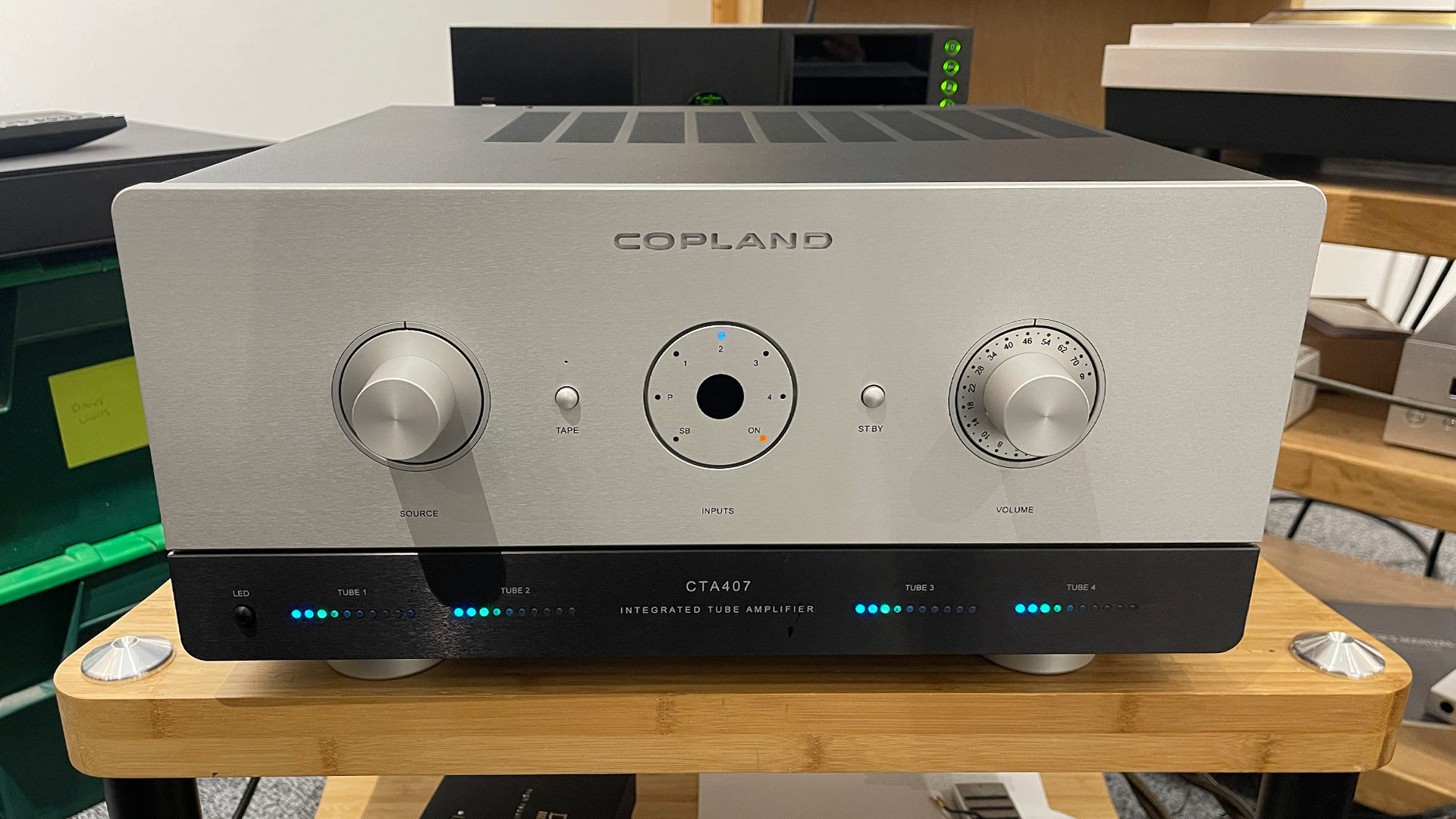What Hi-Fi? Verdict
Copland’s CTA407 is a fuss-free valve amplifier. It is well made, decently equipped and sounds lovely
Pros
- +
Balanced, expressive and composed performance
- +
Fuss-free in use
- +
Good phono stage
- +
A pleasure to use
Cons
- -
Up against some tough competition
- -
Needs care in speaker matching
- -
No headphone output
Why you can trust What Hi-Fi?
Copland has never been a particularly prolific manufacturer. Its range has always been small and product life cycles have tended to be long by industry standards. At the time of writing, this tiny Danish manufacturer offers just four integrated amplifiers and a DAC/headphone amplifier. There are no source components, as was once the case.
Copland isn’t particularly dogmatic about the technology it employs, with its products using solid-state, valve and hybrid circuits. Regardless of the design, we have invariably liked what we have heard, and that certainly applies to the range-topping CTA407 integrated stereo amplifier we have on test here.
Design
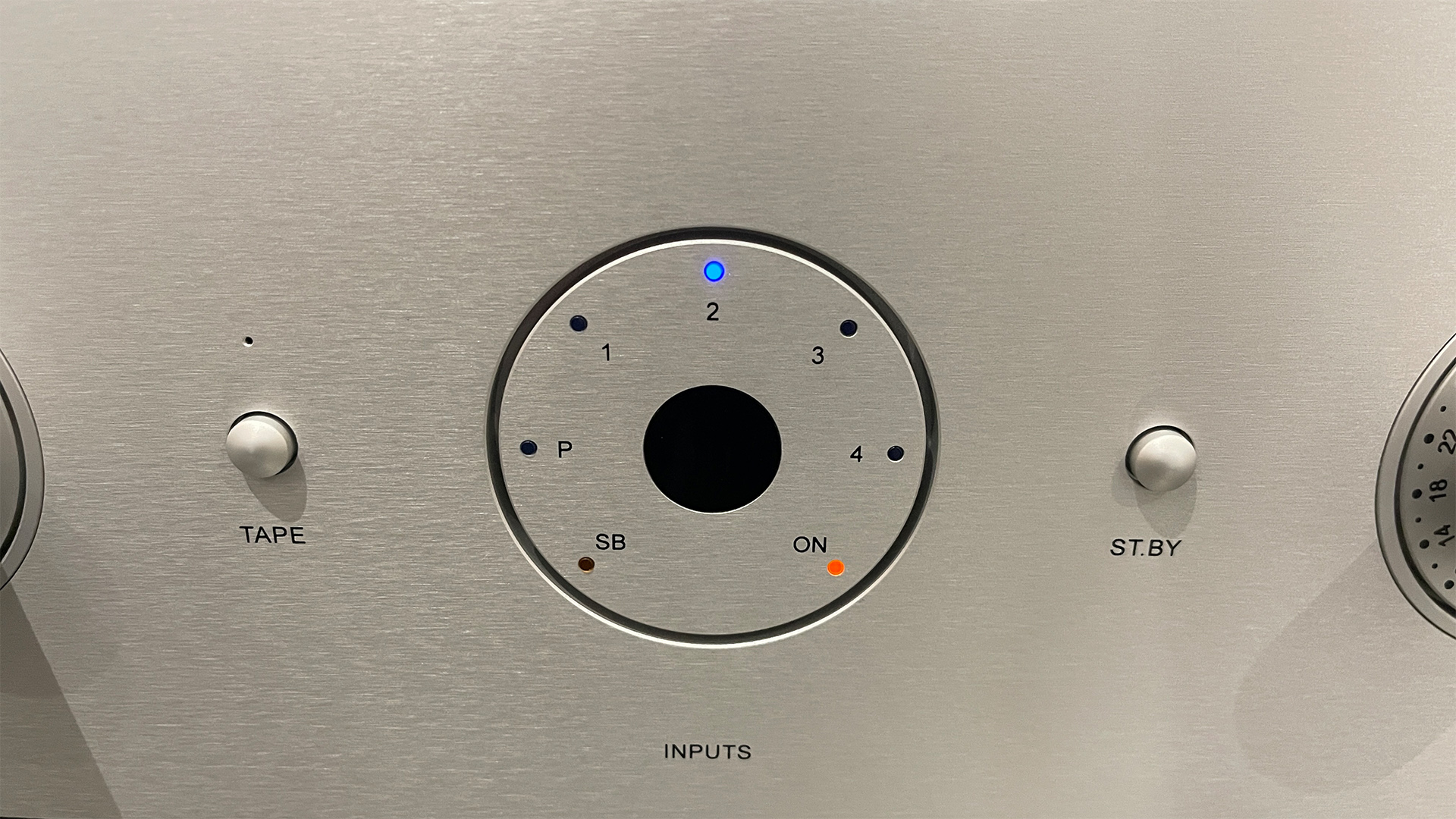
This is currently the only all-valve stereo amplifier the company makes, and as such demands a little more from its owner. Take the Copland CTA407 out of its packing and you will find that it is a reasonably chunky unit. Your first task is to install the quartet of output valves that are supplied in matched pairs. Our review sample has 6550-type valves but the CTA407’s circuit is happy to accept any from the KT90/KT100/KT120/KT150 families and automatically adjust accordingly.
The CTA407’s output circuit is a push-pull, ultra-linear design that delivers 50 watts per channel into both 4- and 8-ohm speaker loads. On paper, it is possible to push the valves harder and double that power output figure, but Copland has chosen to be more conservative on reliability and performance grounds.
Installation of the output valves isn’t difficult, but it does require the removal of the lid. You will need a 2.5mm Allen key and the patience to take out eight bolts. Once that is done it is an easy matter to seat each output valve in place, but be careful to make sure that they are properly pushed into the socket. The smaller valves used in the preamp circuitry (12BH7 x 2 and 12AX7) are already installed on our sample.
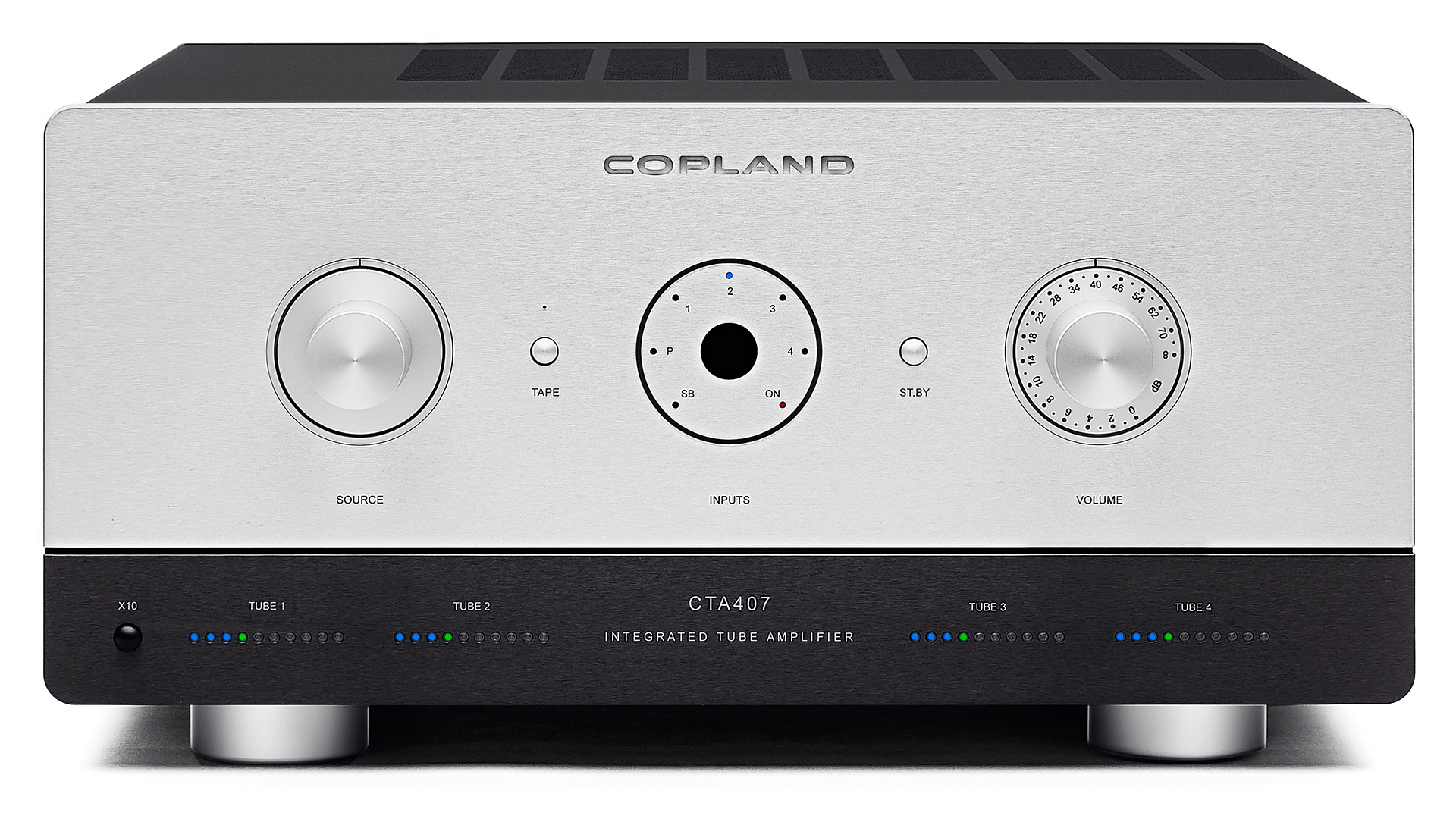
Phono stage? Yes (MM)
Inputs Line level x5, MM phono
Outputs Line level
Bluetooth? No
Headphone output? No
Dimensions (hwd) 21.5 x 43.5 x 42cm
Weight 20kg
The clever bit about the Copland’s circuitry is its ability to accommodate different types of output valves without issue. Not only does the circuit’s servo-based system automatically adjust bias current for each type of valve, but it also operates as part of the amplifier’s high pass filtering network, something that is claimed to improve the CTA407’s performance significantly.
The array of multi-coloured LEDs positioned in the black band, low on the amplifier’s front panel, offers a visual indication of valve operating status. Blue and green LEDs show all is fine, orange indicates increasing wear while red means the valves are due for replacement or a fault has occurred. It is a neat system that works well.
There is a choice of speaker outputs as is usual with transformer-coupled valve amplifiers. These are marked as 4 and 8 ohms and should be matched to the nominal impedance of your speakers. There is no harm in experimenting though. Just stick to the one that suits your taste the best.
Build & compatibility
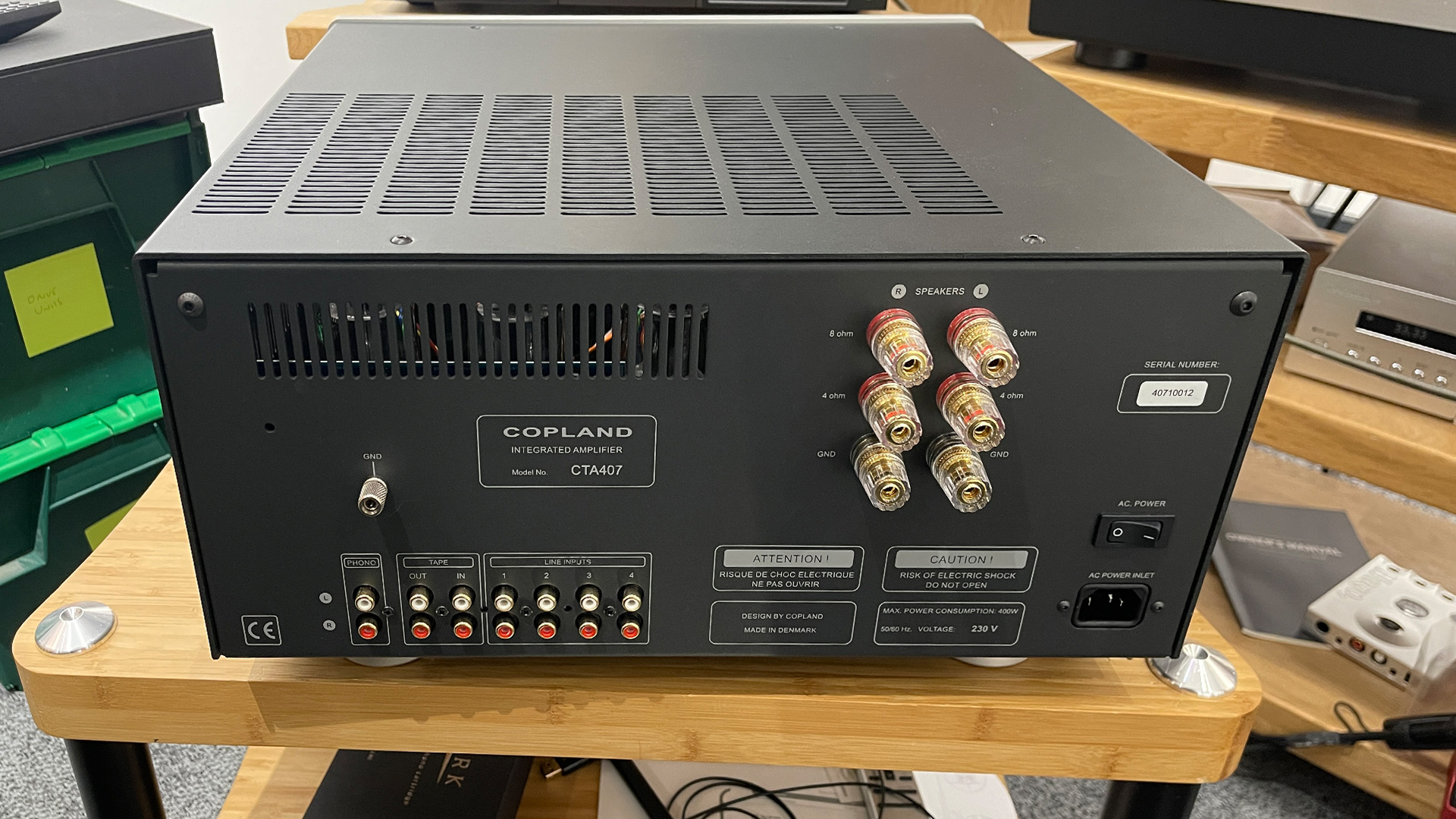
The CTA407’s build quality is as good as we would expect. Copland has always produced understated but classy products and this amplifier is no different. It is built solidly and every control feels precise in use. The CTA407 has an aura of functionality rather than something overtly showy and luxurious, and we are fine with that. The supplied remote is a simple and clear affair that works well.
This Copland’s connectivity is decent. There is a moving magnet phono stage (which will also work with high-output moving coils), four line-level inputs and a tape loop. That array should be fine for the kinds of systems it will be used in, though it isn’t hard to find alternatives that include digital inputs or a headphone output.
An amplifier at this level demands a top-class system. Our sources are Naim’s ND555/555 PS DR music streamer and the Technics SL-1000R record player fitted with a Vertere Dark Sabre moving magnet cartridge. We use a range of speakers that include our reference ATC SCM 50, Wilson Benesch’s Discovery 3Zero, Spendor’s A7 and the Epos ES14N. The CTA407 drives all of these to decent though not wall-rattling levels; 50 watts per channel can only go so far.
Sound
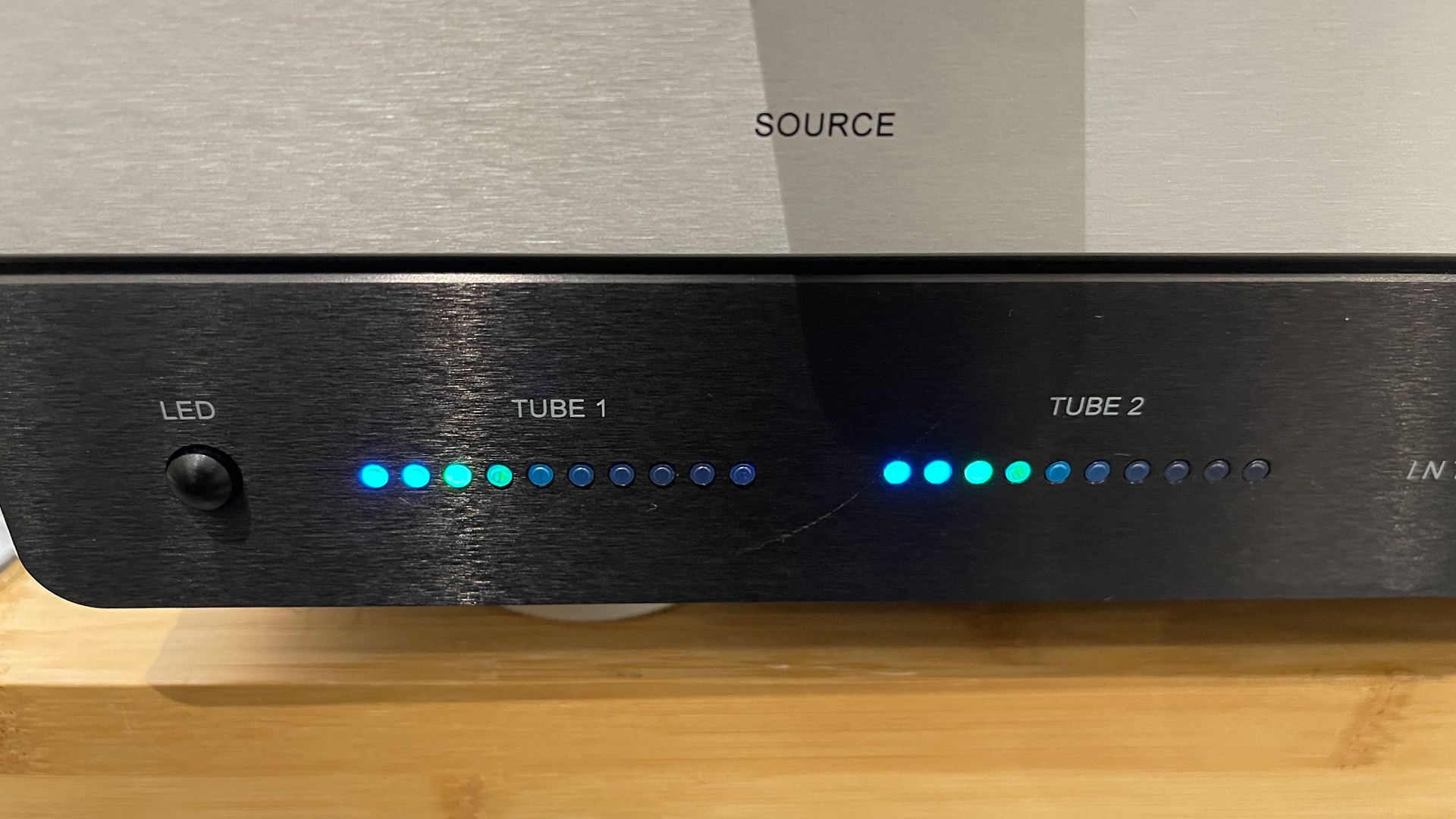
In our experience, Copland’s products have never been for those who crave the stereotypical smooth, rich and lush ‘valve’ sound. They have always struck us as being precise, controlled and tonally even, a bit like a good transistor design but with some valve goodness thrown in.
Most valve alternatives would wave a white flag if confronted with Eminem’s Marshall Mathers set, but not this Copland. Within the limits of its relatively modest power output, it delivers the recording with surprising punch and attack. The rolling bassline on The Way I Am thumps with conviction, while the rapper’s rapid-fire delivery comes through with passion and defiance intact. His voice sounds wonderfully natural, flowing with the kind of grace that only the very best amplifiers manage. Rhythmically, things are surefooted rather than energetic, but the CTA407 still manages to communicate enough of the song’s insistent energy to satisfy. Our impression is of a sophisticated amplifier that’s firmly in control.
Switching to more acoustic recordings such as Bill Evan’s Everyone Digs… and Shostakovich’s Symphony No.10 reveals that the Copland is terrific at rendering different instrumental textures. We are impressed by the harmonic detail it picks out in a piano or violin, as well as its ability to convey the scale and shape of the recording venue. Large-scale dynamic shifts are delivered with conviction while subtle changes in intensity are communicated with admirable finesse. This amplifier manages to convey the drama of the recording well despite a presentation that majors on sounding sophisticated and composed rather than enthusiastic.
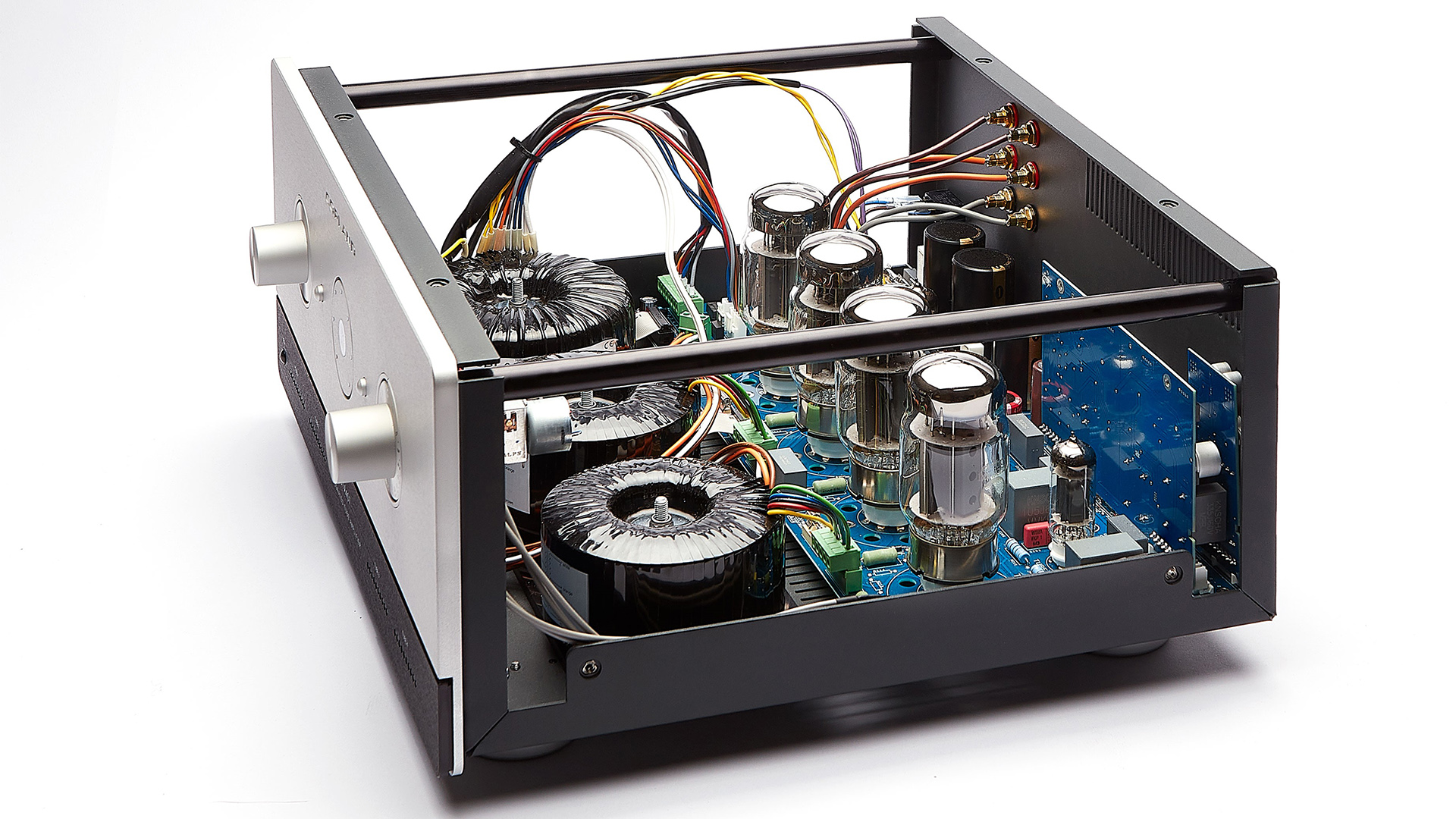
Stereo imaging is expansive. There is admirable precision in the way this amplifier locates instruments from left to right while also layering them convincingly when it comes to depth. Few rivals we’ve heard can transport us to the recording venue so easily.
We are pleased to report that the built-in phono stage is a good one. As we listen to a range of music, from Mary J Blige’s No More Drama and Bob Marley’s Catch A Fire to Beethoven’s 5th Symphony, it becomes clear that this phono circuit mirrors the ability of the line stages well. Its sonic character remains pleasingly balanced, controlled and revealing. We have no issues with excessive hum or high levels of background noise, which suggests a careful implementation of the phono stage circuitry.
Verdict
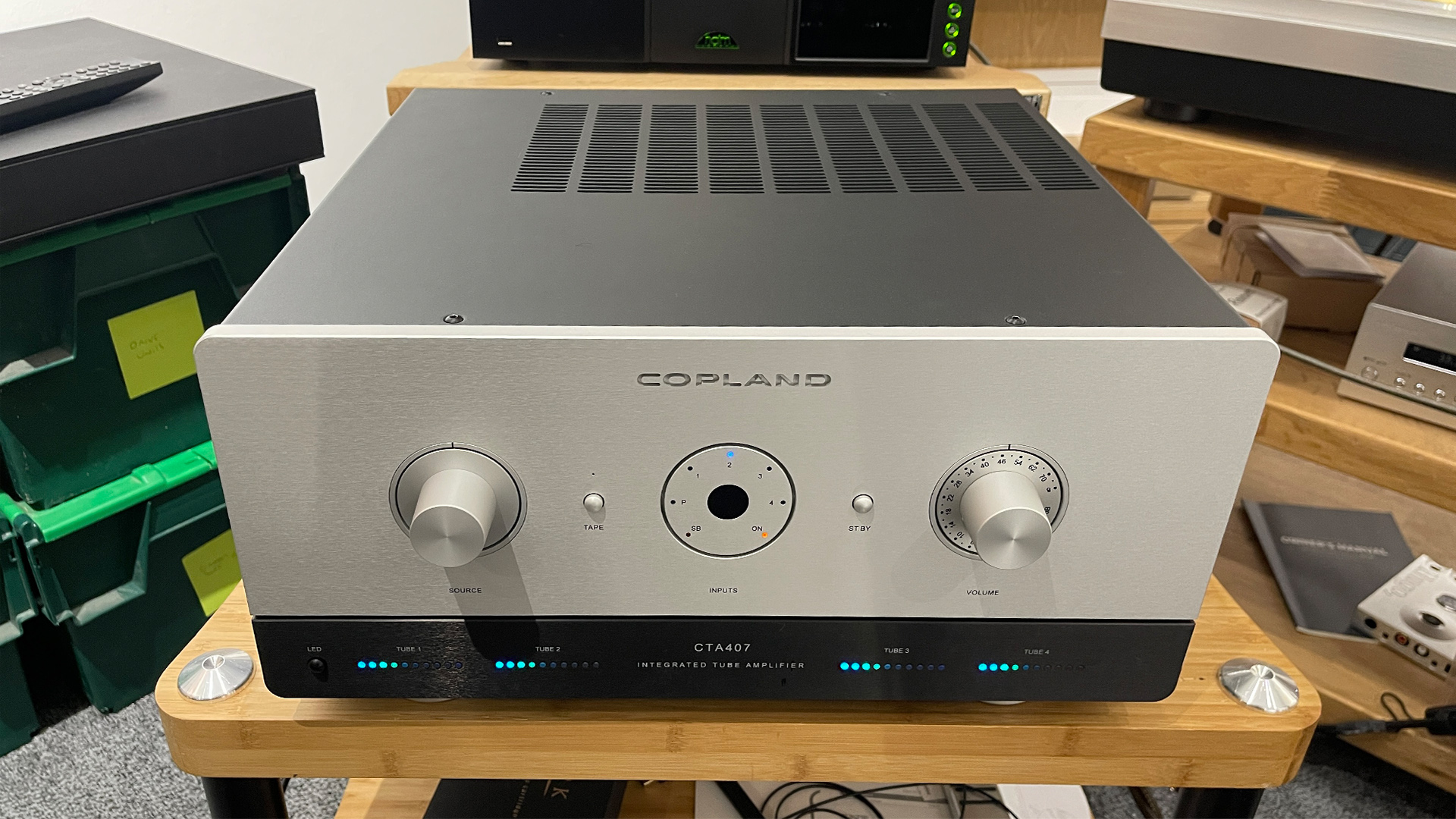
The Copland is a disarming amplifier. For all its obvious talent it has the enviable ability to step away from the limelight, leaving the music to take centre stage. Partner it with care, and it will produce one of the finest sounds we have heard from an integrated at this level. The CTA407 isn’t showy, it doesn’t demand your attention but it does play music superbly. Highly recommended.
First reviewed: November 2024
SCORES
- Sound 5
- Build 5
- Features 3
MORE:
Read our review of the PMC Cor
Also consider the Mark Levinson 5805
Read our Naim SuperNait 3 review
Best stereo amplifiers: the 8 best integrated amps chosen by our experts
What Hi-Fi?, founded in 1976, is the world's leading independent guide to buying and owning hi-fi and home entertainment products. Our comprehensive tests help you buy the very best for your money, with our advice sections giving you step-by-step information on how to get even more from your music and movies. Everything is tested by our dedicated team of in-house reviewers in our custom-built test rooms in London, Reading and Bath. Our coveted five-star rating and Awards are recognised all over the world as the ultimate seal of approval, so you can buy with absolute confidence.
